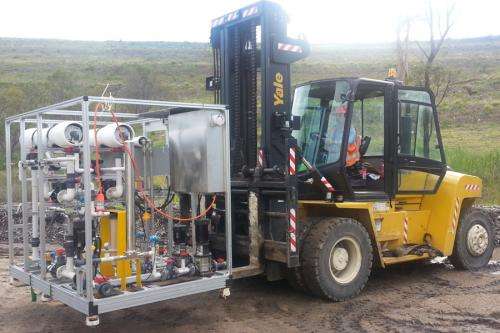Research makes desalination cheaper and greener

A new cost-efficient and environmentally-friendly method of desalination that could use up to 80 per cent less energy has been developed by a team of Sydney researchers.
With an El Nino weather pattern expected to develop in Spring, possibly triggering droughts and bushfires, researchers from the UTS Centre for Technology in Water and Wastewater (CTWW) have developed an innovative way of desalinating water for irrigation.
Traditional methods of desalination rely on large-scale heating and evaporation processes or high pressure water pumps that force water through filtering systems. Dr Hokyong Shon and his CTWW colleagues have designed an alternative process they have dubbed Fertiliser Drawn Forward Osmosis (FDFO).
In the new system, chemicals withdraw saline from water via osmosis by employing soluble fertiliser on the opposite side of a membrane filter.
This design has much to offer a country that uses so much of its water for irrigation, said Dr Shon.
"By reducing the demand that irrigation places on our traditional water supplies, we are conserving precious water for domestic use in our homes," said Dr Shon, who hopes his team's research into osmotic energy – the energy available from the difference in the salt concentration between seawater and river water – can be used in other areas.

"For example, using osmotic energy to drive power generating turbines is just one of the many exciting possibilities," said Dr Shon.
Australia uses 60 per cent of its water supply for irrigation. Desalination plants have been built around the country to reduce reliance on rainfall but they have been criticised for pushing water prices higher and for adding to greenhouse gas emissions because of the heavy energy use. The plants have also traditionally been expensive to maintain because of the damage saline does to plant parts.
The UTS system partly addresses that problem by making all its products and by-products re-useable. It converts saline water and directs it straight into an irrigation system via a process called fertigation. Fertiliser serves a dual purpose as a process material and part of the end product, maximising resources and eliminating waste.
A pilot installation of a FDFO system has been adopted by NSW State Water through the National Centre of Excellence for Desalination Australia and is currently being used at a Newcastle coal mining site to desalinate saline ground water.
Provided by University of Technology, Sydney


















